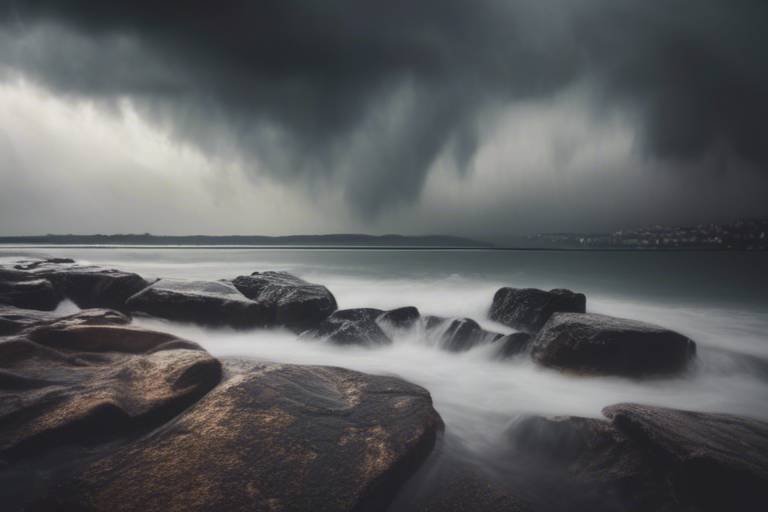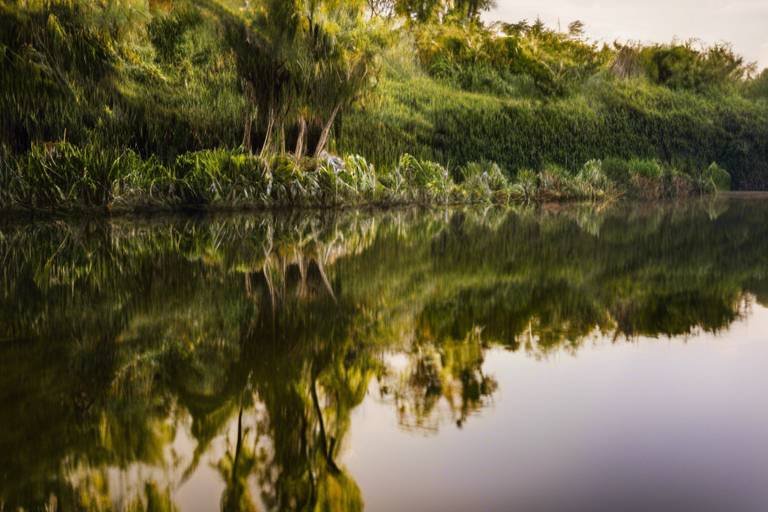How to Capture Stunning Sunrise and Sunset Photos While Traveling
Are you ready to elevate your travel photography game and capture stunning sunrise and sunset photos that will leave everyone in awe? Mastering the art of photographing these magical moments requires a combination of skill, creativity, and a keen eye for detail. With the right techniques and equipment, you can turn ordinary sunrise and sunset scenes into extraordinary works of art that truly capture the beauty of nature.
When it comes to capturing breathtaking sunrise and sunset photos while traveling, one of the key factors to consider is choosing the right location. Selecting a spot with a clear view of the horizon and interesting foreground elements can significantly enhance the visual impact of your photos. Whether you're on a sandy beach, a mountaintop, or overlooking a city skyline, the location you choose plays a crucial role in the overall composition of your images.
Understanding lighting conditions is another essential aspect of capturing stunning sunrise and sunset photos. The soft, warm light during these golden hours can create a magical atmosphere in your photos, but it's important to adapt your camera settings to make the most of the available light. By adjusting your exposure settings and using techniques like bracketing, you can ensure that your photos are well-exposed and full of vibrant colors.
Composition is key when it comes to creating visually striking sunrise and sunset photos. By following the rule of thirds, incorporating leading lines, and framing the natural beauty of the sky and landscape, you can compose images that are both balanced and dynamic. Experimenting with different angles and perspectives can also help you capture unique and captivating shots that stand out from the rest.
Filters can be powerful tools for enhancing the drama and impact of your sunrise and sunset photos. ND filters and graduated ND filters can help you control exposure levels, enhance colors, and bring out details in both the sky and the landscape. By using filters strategically, you can add depth and dimension to your photos, creating a more immersive viewing experience for your audience.
Post-processing is another important step in the photography process that can take your sunrise and sunset photos to the next level. By using editing software to adjust colors, contrast, and sharpness, you can enhance the beauty of the sky and landscape in your images. Whether you prefer a more natural look or a more dramatic effect, editing allows you to fine-tune your photos to achieve the desired result.
Experimenting with silhouettes and reflections can add a creative touch to your sunrise and sunset photos. Whether you're capturing the outline of a tree against a colorful sky or the reflection of a mountain in a tranquil lake, incorporating these elements can add depth and interest to your images. By playing with light and shadows, you can create visually compelling photos that tell a story and evoke emotion.
Planning and patience are essential virtues when it comes to capturing stunning sunrise and sunset photos while traveling. By researching locations, checking weather forecasts, and scouting out potential shooting spots in advance, you can increase your chances of success. Remember that the best photos often require waiting for the perfect moment, so be patient and persistent in your pursuit of the ideal shot.
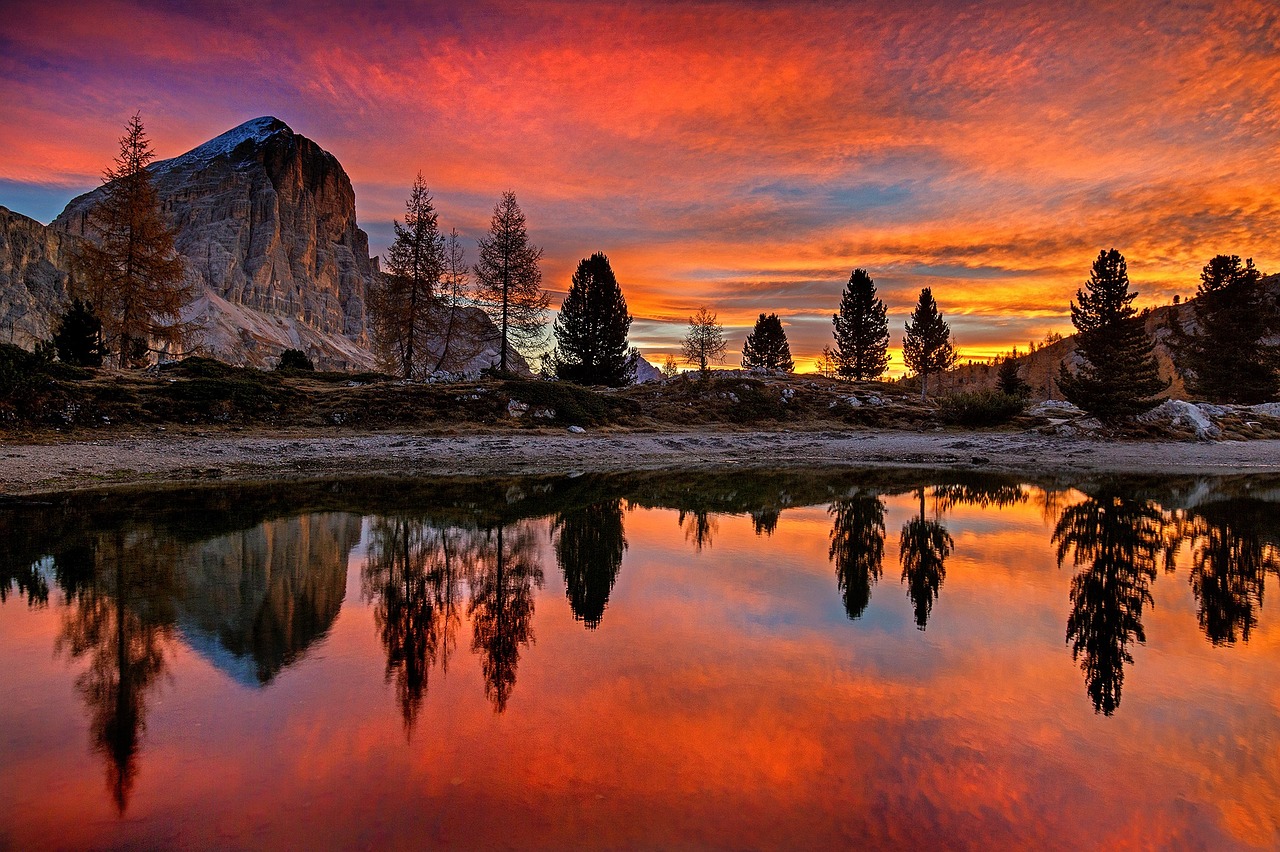
Choosing the Right Location
When it comes to capturing stunning sunrise and sunset photos while traveling, selecting the right location is crucial. The perfect spot can elevate your photos from ordinary to extraordinary, creating a memorable visual experience. Consider various factors when choosing your shooting location, such as the direction of light, the presence of interesting foreground elements, and the accessibility of the site.
Imagine standing on a secluded beach with the sun painting the sky in a myriad of colors, or perched on a hill overlooking a picturesque valley as the sun dips below the horizon. These are the moments that make for breathtaking photos, where the magic of nature unfolds before your lens. By carefully selecting your location, you set the stage for capturing the beauty and serenity of sunrise and sunset.

Understanding Lighting Conditions
When it comes to capturing stunning sunrise and sunset photos while traveling, understanding lighting conditions is key to achieving breathtaking results. The magical moments of sunrise and sunset offer unique lighting challenges and opportunities for photographers. At sunrise, the soft, warm light creates a peaceful and serene atmosphere, while at sunset, the golden hour bathes the landscape in a warm, glowing light. These lighting conditions can dramatically enhance the mood and quality of your photos, adding depth and dimension to your images.
During sunrise and sunset, the angle and quality of light are constantly changing, creating dynamic and ever-evolving scenes. As the sun rises or sets, the colors in the sky shift from soft pastels to vibrant oranges and reds, casting long shadows and creating dramatic silhouettes. Understanding how to adapt to these changing lighting conditions is essential for capturing the beauty of these magical moments.
One important aspect to consider when photographing sunrise and sunset is the direction of light. The warm, low-angle light during these times can create striking contrasts and shadows, adding depth and dimension to your photos. By positioning yourself in relation to the light source, you can create dramatic effects and highlight textures and details in the landscape.
Another factor to keep in mind is the color temperature of the light during sunrise and sunset. The warm, golden light can create a soft, romantic glow in your photos, enhancing the mood and atmosphere of the scene. By adjusting your white balance settings, you can capture the true colors of the sky and landscape, ensuring that your photos accurately reflect the beauty of the moment.
When shooting during sunrise and sunset, it's important to be mindful of the changing light conditions and adjust your camera settings accordingly. Experiment with different exposure settings, aperture values, and shutter speeds to achieve the desired effects in your photos. By mastering the art of lighting and exposure, you can create stunning sunrise and sunset photos that truly capture the magic of these fleeting moments.
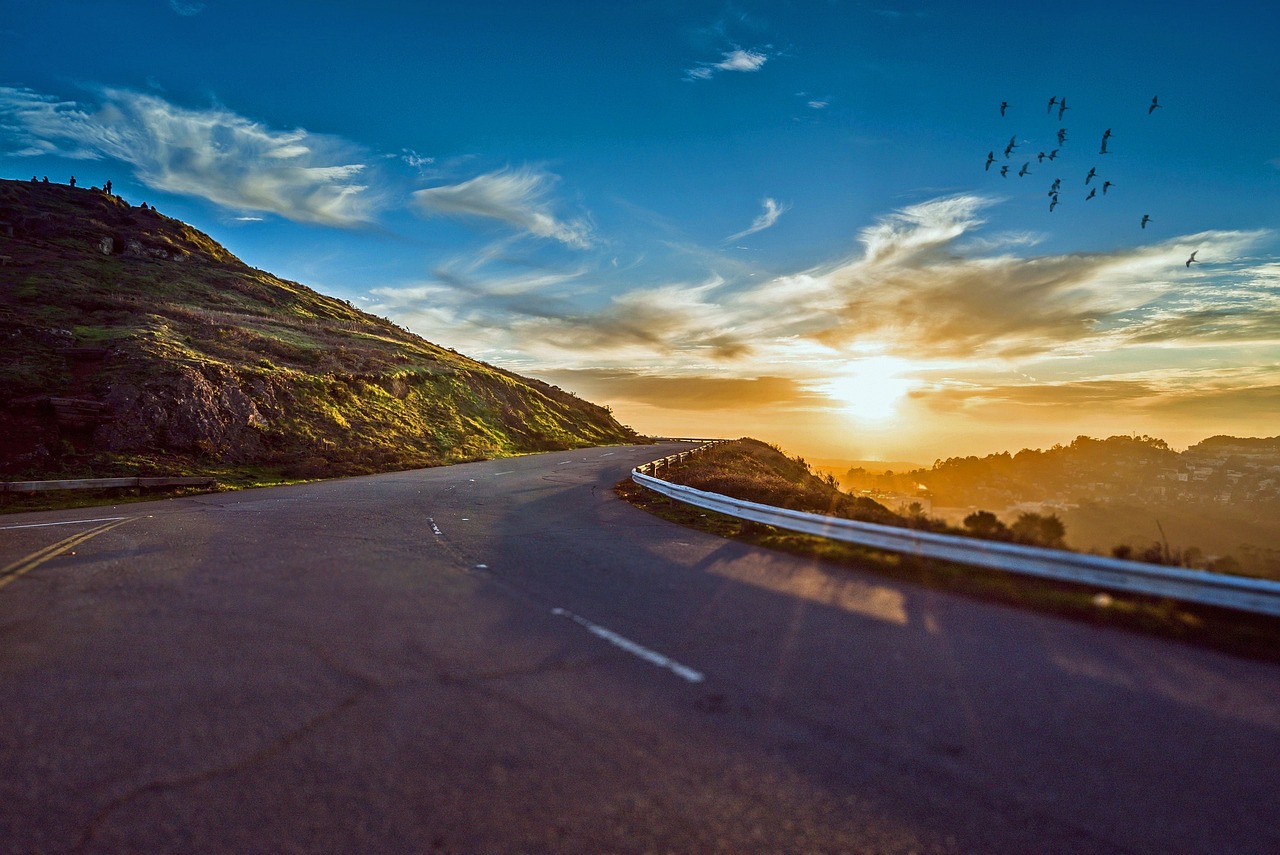
Composition Techniques
When it comes to capturing stunning sunrise and sunset photos while traveling, mastering composition techniques is essential. It's not just about pointing and shooting; it's about creating visually captivating images that tell a story and evoke emotions. By understanding and applying various composition principles, you can elevate your sunrise and sunset photos to a whole new level.
One fundamental technique to keep in mind is the rule of thirds. Imagine dividing your frame into a grid of nine equal sections using two horizontal and two vertical lines. By placing key elements of your composition along these lines or at their intersections, you can create a more balanced and visually appealing image.
Another effective composition technique is using leading lines to guide the viewer's eye through the photo. Whether it's a winding path, a shoreline, or a row of trees, incorporating leading lines adds depth and movement to your sunrise and sunset shots, drawing the viewer into the scene.
Consider the balance of elements in your composition. Look for ways to juxtapose the bright, colorful sky of sunrise or sunset with interesting foreground elements. This contrast can create a sense of depth and dimension in your photos, making them more engaging and dynamic.
Experiment with perspective and angles to add a unique touch to your sunrise and sunset compositions. Don't be afraid to get low to the ground or climb to a higher vantage point to capture a different view of the sky and landscape. Changing your perspective can result in more creative and visually striking photos.
Lastly, don't forget about negative space. Sometimes, less is more when it comes to composition. Leaving empty space in your frame can help emphasize the beauty of the sky and create a sense of tranquility and serenity in your sunrise and sunset photos.

Using Filters for Dramatic Effects
When it comes to capturing stunning sunrise and sunset photos, using filters can add dramatic effects and enhance the overall quality of your images. Filters such as ND filters (Neutral Density) and graduated ND filters are essential tools for any photographer looking to elevate their sunrise and sunset photography game.
ND filters help control the amount of light entering your camera, allowing you to achieve longer exposures even in bright lighting conditions. This is particularly useful during sunrise and sunset when the light can be intense. By using ND filters, you can create smooth water effects, blur moving clouds, and capture the beautiful colors of the sky with greater clarity.
On the other hand, graduated ND filters are ideal for balancing the exposure between the bright sky and the darker foreground. These filters gradually transition from dark to clear, helping you maintain detail in both the sky and landscape. By using graduated ND filters, you can capture a well-exposed scene with rich colors and contrast.
Experimenting with different types of filters and understanding how they affect your photos can open up a world of creative possibilities. Whether you want to emphasize the vibrant colors of a sunset or create a dreamy, ethereal look during sunrise, filters can help you achieve the desired effects with precision and control.
**Frequently Asked Questions:** 1. **Do I need expensive filters to capture stunning sunrise and sunset photos?** - While high-quality filters can make a difference in the final outcome of your photos, there are budget-friendly options available that can still produce impressive results. It's important to choose filters that are compatible with your camera and lenses to ensure optimal performance. 2. **How do I know which filter to use for a specific lighting situation?** - Understanding the purpose of each filter and how it affects light transmission is key to selecting the right filter for the desired effect. Experimenting with different filters in various lighting conditions can help you determine which ones work best for your style of photography. 3. **Can I achieve similar effects to filters using post-processing software?** - While some effects can be replicated in post-processing, filters offer a level of control and precision that may be challenging to achieve solely through editing. Filters allow you to capture the scene as accurately as possible in-camera, reducing the need for extensive editing later on. 4. **Are there any tips for maintaining and cleaning filters to ensure optimal performance?** - To keep your filters in top condition, regularly clean them using a soft microfiber cloth to remove dust and smudges. Avoid using harsh chemicals or abrasive materials that could damage the filter coatings. Store your filters in protective cases when not in use to prevent scratches and other damage.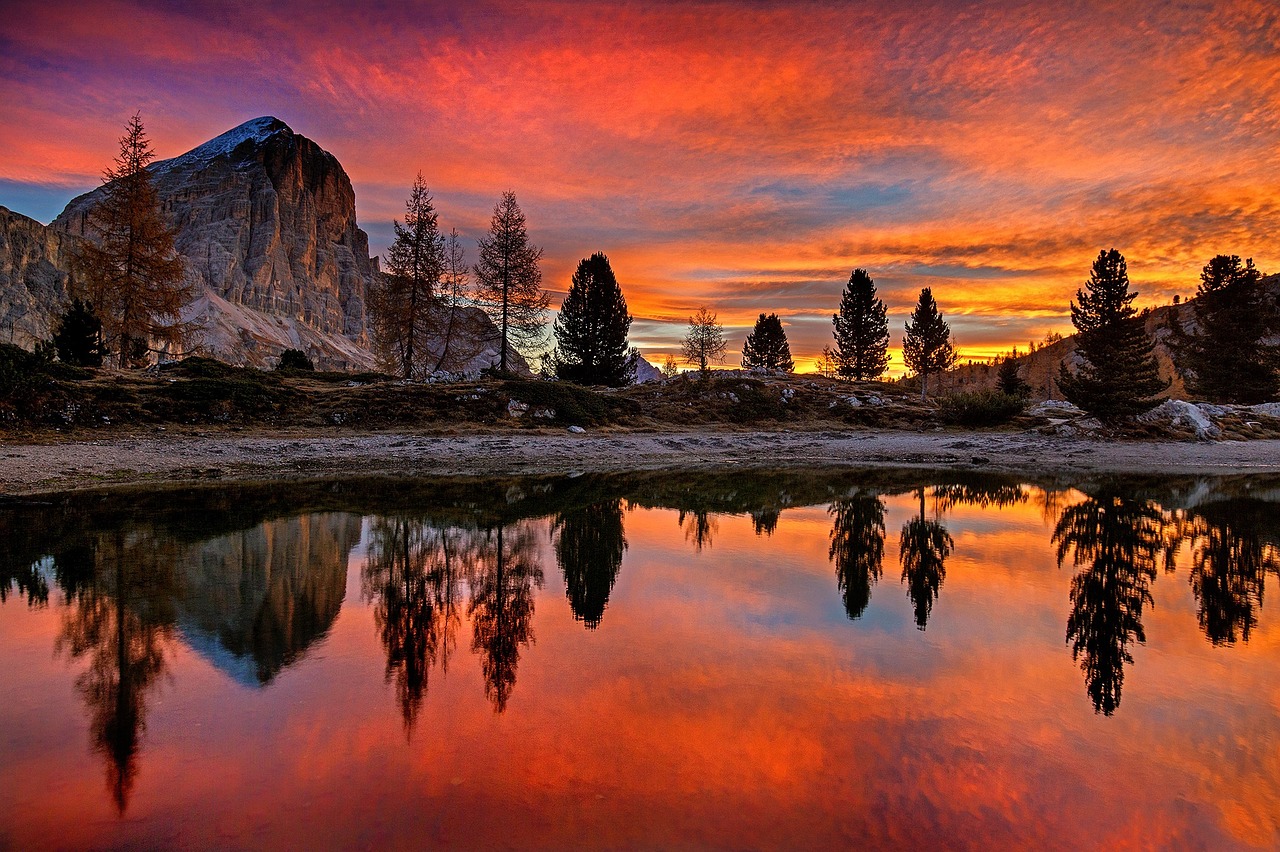
Mastering Exposure Settings
Mastering exposure settings is crucial for capturing stunning sunrise and sunset photos. By understanding how to adjust your camera's exposure settings, including aperture, shutter speed, and ISO, you can achieve the perfect balance of light and shadow in your images. When shooting during sunrise or sunset, the lighting conditions can change rapidly, so being able to quickly adjust your exposure settings is essential to ensure you capture vibrant colors and details in every shot.

Editing Tips for Stunning Results
When it comes to capturing stunning sunrise and sunset photos, editing plays a crucial role in enhancing the final results. By mastering post-processing techniques, you can elevate the beauty of the sky and landscape in your images to a whole new level. One effective editing tip is to adjust the colors of your photos to bring out the vibrant hues of the sky during these magical moments. By enhancing the contrast, you can make the colors pop and create a more dynamic visual impact.
Another essential editing tip is to work on the sharpness of your sunrise and sunset photos. By refining the sharpness, you can bring out the intricate details in the sky and landscape, adding depth and clarity to your images. This step is particularly important in highlighting the textures of the clouds, the sun's rays, and the surrounding environment, creating a more immersive viewing experience for your audience.
Furthermore, paying attention to the overall composition of your sunrise and sunset photos during the editing process is key to achieving stunning results. By fine-tuning the framing, cropping, and alignment of elements within your photos, you can create a more visually appealing and balanced composition. This step allows you to draw the viewer's eye to the focal points of the image and guide their gaze through the scene in a coherent and engaging manner.
Experimenting with different editing tools and techniques can also lead to unique and creative results in your sunrise and sunset photos. From adjusting the saturation levels to applying filters and effects, don't be afraid to explore various editing options to enhance the mood and atmosphere of your images. By pushing the boundaries of traditional editing practices, you can infuse your photos with a touch of artistry and personal style, making them stand out from the crowd.
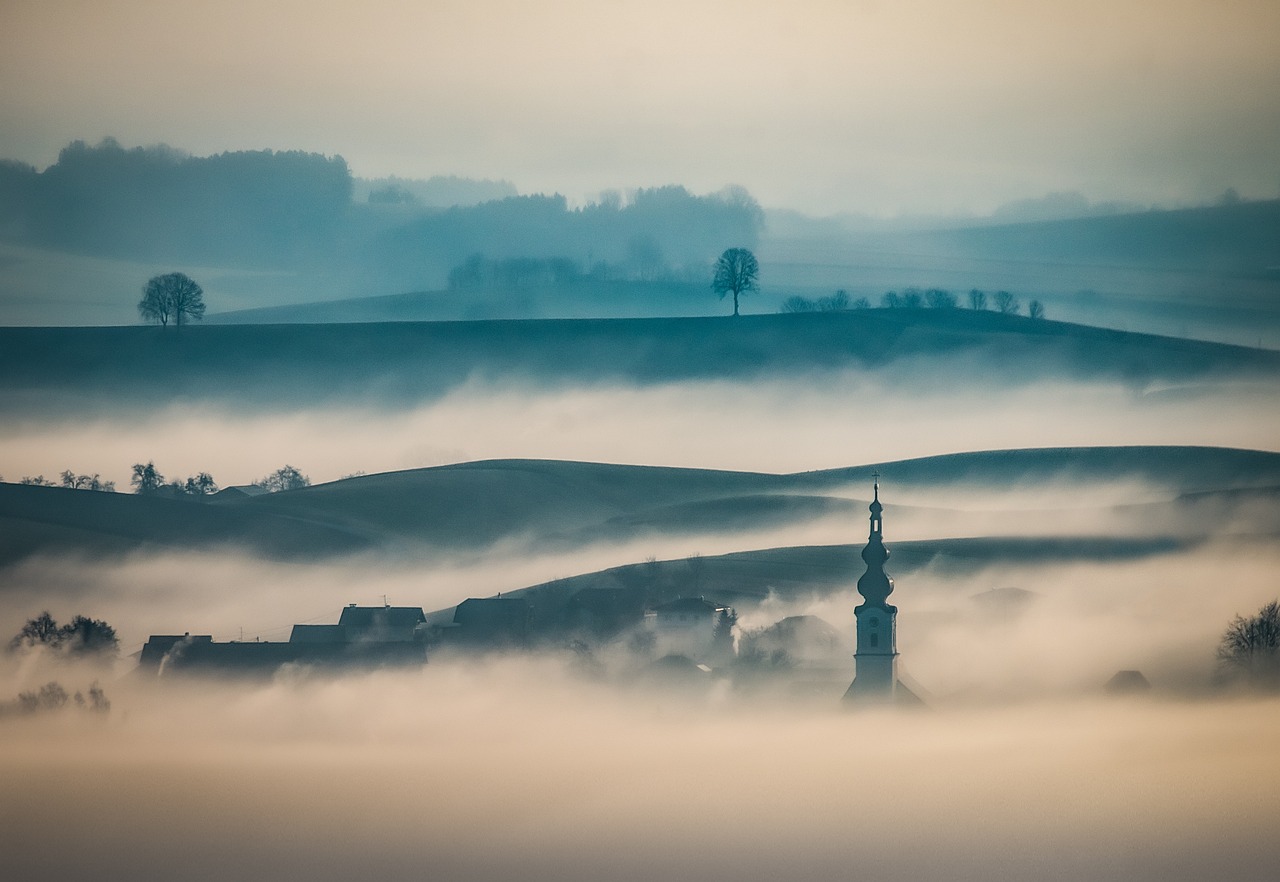
Capturing Silhouettes and Reflections
When it comes to capturing stunning sunrise and sunset photos, exploring the art of capturing silhouettes and reflections can add a whole new dimension to your photography. Silhouettes of objects against the colorful sky or water reflections can create a mesmerizing effect in your photos, enhancing their visual appeal and storytelling. Imagine a lone tree standing tall against the fiery hues of a sunset or the reflection of a mountain mirrored in a tranquil lake at sunrise. These elements can elevate your photos from ordinary to extraordinary, capturing the essence of the moment in a unique and captivating way.
To achieve striking silhouettes and reflections in your sunrise and sunset photos, consider the positioning of your subject in relation to the light source. Placing your subject in front of the bright and colorful sky can create a stark silhouette against the vibrant backdrop, emphasizing its shape and outline. Experiment with different angles and compositions to find the most compelling silhouette for your shot. Additionally, incorporating reflections in your photos can add depth and visual interest, especially when shooting near bodies of water. The mirror-like surface of the water can enhance the colors and textures of the sky, creating a stunning reflection that enhances the overall composition of your image.
When capturing silhouettes and reflections during sunrise and sunset, pay attention to the contrast between light and shadow. The dramatic interplay of light and dark can create a dynamic and visually striking image. Adjust your camera settings to ensure that the silhouette remains dark and well-defined against the bright background, while also capturing the subtle details of the reflection in the water. Consider using a wide aperture to create a shallow depth of field, focusing on the silhouette or reflection while blurring the background for a more artistic effect.
Experiment with different compositions and creative techniques to make the most of silhouettes and reflections in your sunrise and sunset photos. Whether you're capturing the silhouette of a person, a landmark, or a natural element, look for opportunities to convey emotion and storytelling through your images. By incorporating these elements into your photography, you can create visually compelling and emotionally resonant photos that capture the magic of sunrise and sunset in a unique and unforgettable way.

Planning and Patience
When it comes to capturing stunning sunrise and sunset photos while traveling, planning and patience are key elements that can elevate your photography game to the next level. Imagine yourself standing on a serene beach, waiting for the sun to rise above the horizon, painting the sky with vibrant colors. Or picture yourself perched on a hill, witnessing the sun slowly setting behind a majestic mountain, casting a warm glow over the landscape. These magical moments require careful planning and a good dose of patience to capture them in all their glory.
Planning your sunrise or sunset photo shoot starts long before you actually pick up your camera. Research the location you want to shoot at, considering factors like the direction of the sun, potential obstacles that may block your view, and interesting elements that could enhance your composition. Scout the area beforehand to find the best vantage points for your photos, taking into account the accessibility and safety of the location.
Check the weather forecast to ensure you have clear skies or interesting cloud formations that can add drama to your sunrise or sunset photos. Keep in mind that some of the most spectacular shots are captured when nature surprises us with unexpected weather conditions, so be prepared to adapt to changing circumstances. Flexibility is key when it comes to outdoor photography, as you never know when a sudden rain shower or a burst of sunlight might create a magical moment.
Patience is a virtue that every sunrise and sunset photographer must cultivate. Sometimes, the perfect shot requires waiting for hours in the cold or enduring multiple failed attempts before capturing that one breathtaking image. Embrace the waiting game as part of the creative process, allowing yourself to immerse in the beauty of nature unfolding before your eyes. Remember, patience pays off in photography, rewarding you with images that evoke emotions and memories long after the moment has passed.
As you plan your sunrise and sunset photo shoots, remember that each moment is unique and fleeting. Be present in the moment, savoring the beauty of the natural world around you. Take the time to appreciate the play of light and shadow, the colors dancing across the sky, and the sense of wonder that comes with witnessing the beginning or end of a day. With careful planning and a generous dose of patience, you can capture stunning sunrise and sunset photos that tell a story and evoke a sense of awe in those who view them.
Frequently Asked Questions
- What equipment do I need to capture stunning sunrise and sunset photos?
To capture breathtaking sunrise and sunset photos, you will need a digital camera with manual settings to control exposure, a sturdy tripod to keep your camera steady, and possibly filters like ND filters for enhancing colors and contrast.
- How important is the location for capturing great sunrise and sunset photos?
The location plays a crucial role in the quality of your photos. Choosing a spot with interesting foreground elements, good lighting direction, and easy accessibility can significantly enhance the beauty of your sunrise and sunset shots.
- What are some composition techniques that can improve my sunrise and sunset photos?
Composition is key to creating visually appealing photos. Techniques like the rule of thirds, leading lines, and framing can help you capture the natural beauty of the sky and landscape in a more engaging and impactful way.
- How can I enhance my sunrise and sunset photos during post-processing?
Post-processing is essential for bringing out the full potential of your photos. Adjusting colors, contrast, and sharpness can help you achieve stunning results that truly showcase the beauty of the sky and landscape in your images.
- What should I consider when planning a sunrise or sunset photo shoot?
When planning a photo shoot during sunrise or sunset, factors like weather conditions, timing, and potential obstacles should be taken into account. Patience is key, as waiting for the perfect moment can lead to capturing truly remarkable photos.






